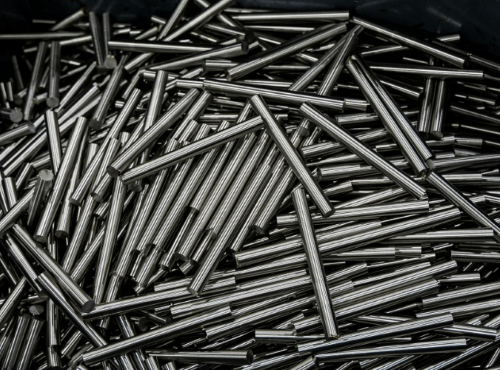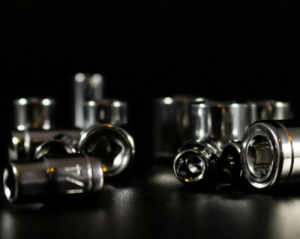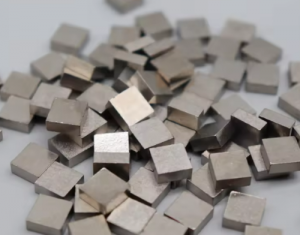Extreme Heat-Resistant Materials: Types and Examples

Introduction
In the world of materials science, extreme heat-resistant materials play a critical role in various high-temperature applications ranging from aerospace engineering to industrial furnaces. These materials are specially designed to withstand intense heat without losing their structural integrity. This article delves into the types of extreme heat-resistant materials and provides a comparative analysis of the top five heat-resistant metals and alloys.
Types of Extreme Heat-Resistant Materials
Extreme heat-resistant materials can be broadly classified into three categories: ceramics, metals, and alloys. Each category has unique properties that make it suitable for specific applications.

- Ceramics: Known for their ability to withstand incredibly high temperatures without melting or decomposing. Examples include silicon carbide and zirconia, which are used in applications such as kiln linings and turbine blades.
- Metals: While most metals tend to melt at high temperatures, certain metals like tungsten and molybdenum stand out for their high melting points.
- Alloys: These are combinations of metals that are engineered to improve certain qualities, such as heat resistance. Examples include Inconel and Kanthal, which are used in environments where thermal resistance is crucial.
Related reading: A List Of Heat-Resistant Materials
Top 5 Heat-Resistant Metals
Heat-resistant metals, the majority and exemplary among extreme heat-resistant materials, showcase unique properties that make them indispensable in high-temperature applications. These metals come with exceptionally high melting points and remarkable resilience in extreme conditions, providing critical solutions in a variety of demanding industries.

- Tungsten: Tungsten boasts the highest melting point of all pure metals at 3,422 degrees Celsius, making it ideal for high-temperature applications in electrical and military industries.
- Molybdenum: With a melting point of 2,623 degrees Celsius, molybdenum is excellent for use in furnace parts and aerospace components because of its strength and thermal conductivity.
- Niobium: This metal is used in superalloys for jet engines and other applications that require heat resistance up to 2,468 degrees Celsius.
- Tantalum: Known for its robustness at high temperatures, tantalum can resist corroding up to 2,996 degrees Celsius, making it valuable in the chemical processing industry.
- Rhenium: Among the highest melting points at 3,180 degrees Celsius, rhenium is used in high-temperature turbine engines and thermocouples.
Top 5 Heat-Resistant Alloys
The top heat-resistant metals set the benchmark for extreme heat tolerance, while alloys offer enhanced versatility and performance by combining the best attributes of multiple metals. Let's explore the top five heat-resistant alloys, demonstrating how they contribute to a wide range of high-stress and high-temperature environments.

- Inconel: Particularly useful in aerospace and automotive industries, Inconel can withstand extreme pressure and heat, maintaining strength at temperatures up to 1,400 degrees Celsius.
- Kanthal: Often used in heating elements, Kanthal can perform at high temperatures up to 1,400 degrees Celsius without losing its strength.
- Hastelloy: This alloy provides excellent resistance to oxidation and corrosion, suitable for chemical processing equipment that operates under high temperatures and corrosive conditions.
- Stellite: Known for its ability to retain hardness and strength at high temperatures, Stellite is often used in high-stress environments such as turbine blades.
- Rene 41: Commonly used in jet engine components, this alloy maintains its properties in temperatures exceeding 1,000 degrees Celsius.
Emerging Extreme Heat-Resistant Materials
The frontier of materials science is continuously expanding with innovations designed to meet the challenges of modern engineering demands:
- High Entropy Alloys (HEAs): These are a new class of alloys that consist of multiple principal elements, which may offer improved strength and exceptional thermal stability.
- Carbon Nanotubes and Graphene: Known for their extraordinary thermal conductivity and strength, these materials are being studied for potential use in thermal management systems.
- Aerogels: Being developed for use in extreme environments, silica aerogels, for example, have remarkable insulation properties and can withstand intense heat while being incredibly lightweight.
Applications of Extreme Heat-Resistant Materials
These advanced materials find diverse benefits and uses (See Table 1). Advanced Refractory Metals (ARM) is a leading manufacturer and supplier of heat resistant materials like Tungsten, Molybdenum, Tantalum, Rhenium, Titanium, and Zirconium. Established in 1994, ARM provides high-quality products to a global clientele, catering to industries such as aerospace, electronics, and industrial processing.
Table 1 A List of Extreme Heat-Resistant Materials
| Category | Material | Melting Point (°C) | Primary Uses |
| Metals | Tungsten | 3,422 | Electrical, military industries |
| Molybdenum | 2,623 | Furnace parts, aerospace components | |
| Niobium | 2,468 | Superalloys for jet engines | |
| Tantalum | 2,996 | Chemical processing industry | |
| Rhenium | 3,180 | High-temperature turbine engines, thermocouples | |
| Alloys | Inconel | Up to 1,400 | Aerospace, automotive industries |
| Kanthal | Up to 1,400 | Heating elements | |
| Hastelloy | - | Chemical processing equipment | |
| Stellite | - | Turbine blades, high-stress environments | |
| Rene 41 | Exceeds 1,000 | Jet engine components | |
| Emerging Materials | High Entropy Alloys (HEAs) | - | Potential future applications |
| Carbon Nanotubes and Graphene | - | Thermal management systems | |
| Aerogels | - | Extreme environments |
- Aerospace: Materials such as tungsten and Rene 41 are crucial for spacecraft and jet engines, which must perform under extreme thermal conditions during launch and re-entry.
- Automotive: Alloys like Inconel are used in manufacturing high-performance exhaust systems and turbochargers that must withstand significant thermal stress.
- Energy Production: Materials like Hastelloy are used in the harsh environments of nuclear reactors where high temperatures and corrosive materials are common.
- Industrial Manufacturing: Ceramics such as silicon carbide line kilns and other equipment in steel and glass manufacturing, provide durability against intense heat.
- Electronics: Advanced materials like graphene are explored for heat sinks and other thermal management solutions in electronics, where managing heat is critical to device performance and longevity.
Conclusion
Extreme heat-resistant materials are indispensable in high heat environments. As industries continue to demand higher performance under increasingly harsh conditions, the development of these materials will be crucial. Innovations in material science not only solve existing engineering challenges but also pave the way for future advancements, making these materials a cornerstone of modern technology.
{{item.content}}
LEVE A REPLY
{{item.children[0].content}}
{{item.content}}






